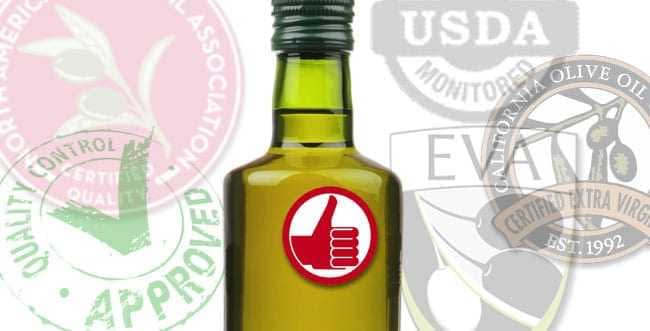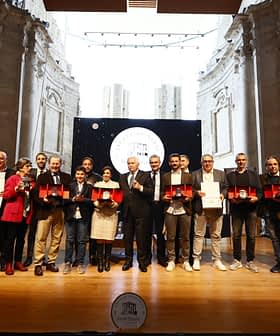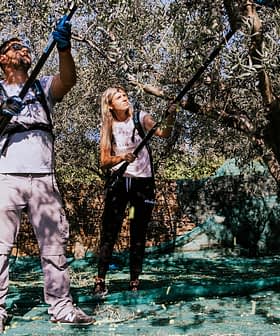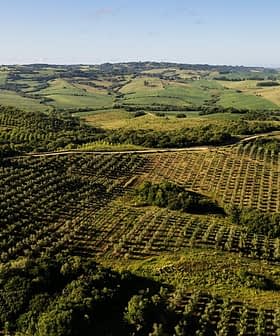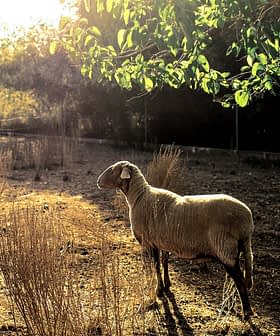More consumers are learning that the taste and health benefits of olive oil are closely tied to its quality and freshness, however there is still little the average shopper can do to be sure she’s buying a bottle of EVOO that measures up.
Tasting the oil before buying it might help, but studies have shown most people still choose old, rancid olive oil in taste tests, because that’s what they’re used to. Harvest and “best before” dates can indicate freshness, but they provide no assurance that the oil is free of defects and adulteration.
See Also:10 Things You Need to Know About Olive Oil
One thing you can do is look for medal stickers from a major competition, such as the New York International Olive Oil Competition, to identify this year’s award-winning extra virgin olive oils.
You might also look for olive oils that bear a designation of origin (DOP) label, which indicates it is monitored by the region that administers the DOP and must adhere to its standards and exhibit certain qualites.
Or, you could look for a quality seal.
To help provide consumers some additional measure of confidence in a confusing market, a number of quality seal programs have been developed that monitor and certify the quality of olive oils displaying their stickers.
Quality seal programs are backed with taste (sensory) testing and chemical standards, and each has its own set of pass/fail benchmarks. One program, the USDA Quality Monitoring Program, also includes regular, unannounced facility visits and traceability audits.
The chemistry can be confusing. But the aim of the seal programs is to monitor, in the absence of a common standard, various chemical and taste parameters so we don’t have to all be experts.
A review of the programs offered by the U.S. Department of Agriculture (USDA), the North American Olive Oil Association, the California Olive Oil Council and the new Extra Virgin Alliance bears similarities, but no two are quite the same.
USDA Quality Monitoring Program
The USDA standards were revised in 2010 and are based on the International Olive Council (IOC) standards, except for differences in linolenic acid and campesterol limits. However, the IOC has since made revisions, including adding tests for the sum of fatty acid methyl and ethyl esters and phenols content. “The U.S. Standards do not include these changes,” said Pamela Stanziani of the USDA Agricultural Marketing Service, although she also noted that the standards documents can be revised “in partnership with industry members …to reflect modern business practices.”
In 2012, the USDA extended its Quality Monitoring Program to include olive oil. As part of the program, USDA inspectors conduct chemical and taste testing, as well as regular audits of the company’s systems and procedures. “They look at every component of a blend, they audit things like sanitation, security, traceability and countries of origin,” said Luisito Cercaci, vice president of quality, research and development at Pompeian, Inc., the first and only company so far to attain the QMP approval. “USDA controls the entire system, gaining a deeper knowledge and becoming more rigorous over time,” he said.
North American Olive Oil Association Quality Seal
The North American Olive Oil Association (NAOOA) follows IOC standards in its tests including sensory analyses and an array of chemical tests. “If you want to be sure about the full picture of authenticity and quality, there aren’t any shortcuts. You have to run them all,” said Eryn Balch, executive vice president of the NAOOA.
NAOOA’s quality control program includes regular testing of its members’ oils, purchased from the marketplace, using standards that are “more stringent than the USDA’s,” said Balch. The key differences between the two sets of standards are different pass levels for linolenic acid and campesterol, and the range of primary authenticity tests. Some of the authenticity tests performed by NAOOA are “secondary” or “Table II” tests under the USDA parameters, meaning that the USDA only performs them if certain components in the first round of tests fail. Balch said the tests should be considered primary, to effectively monitor adulteration.
California Olive Oil Council
The California Olive Council (COOC) tests oil samples submitted by producers for extra virgin quality and authenticity. The COOC test has both sensory and chemical elements, though fewer chemical analyses than the USDA or NAOOA. The COOC will be reviewing its requirements this summer and may add the PPP (pyropheophytin) and DAGs (1 – 2 diacylglycerols) tests, said Executive Director Patricia Darragh. Darragh said that PPP and DAGs are “very important tools in the chemical evaluation for grading oil” and that it is more feasible to do the tests “now that more labs have completed the requirements” for doing them.
Extra Virgin Alliance
The Extra Virgin Alliance (EVA) is a newly-launched non-profit trade association with a goal of restoring consumer trust in the marketplace. Producers worldwide can sign on with EVA and have their product samples drawn from store shelves for testing.
EVA’s standards are based primarily on the Australian Standard for Olive and Olive-Pomace Oils and on commercial practices in Europe, rather than the IOC standards. “IOC authenticity standards for sterols and fatty acid are designed for EU climates and certain high quality oils grown in different climates can fail the test,” explained EVA co-founder Alexandra Kicenik Devarenne.
EVA’s free fatty acid and peroxide limits are lower than other programs and the PPP and DAGs tests are required. Kicenik Devarenne noted that EVA’s standards “will evolve over time as data is gathered from the marketplace.”
[bos]Table removed[/box]

